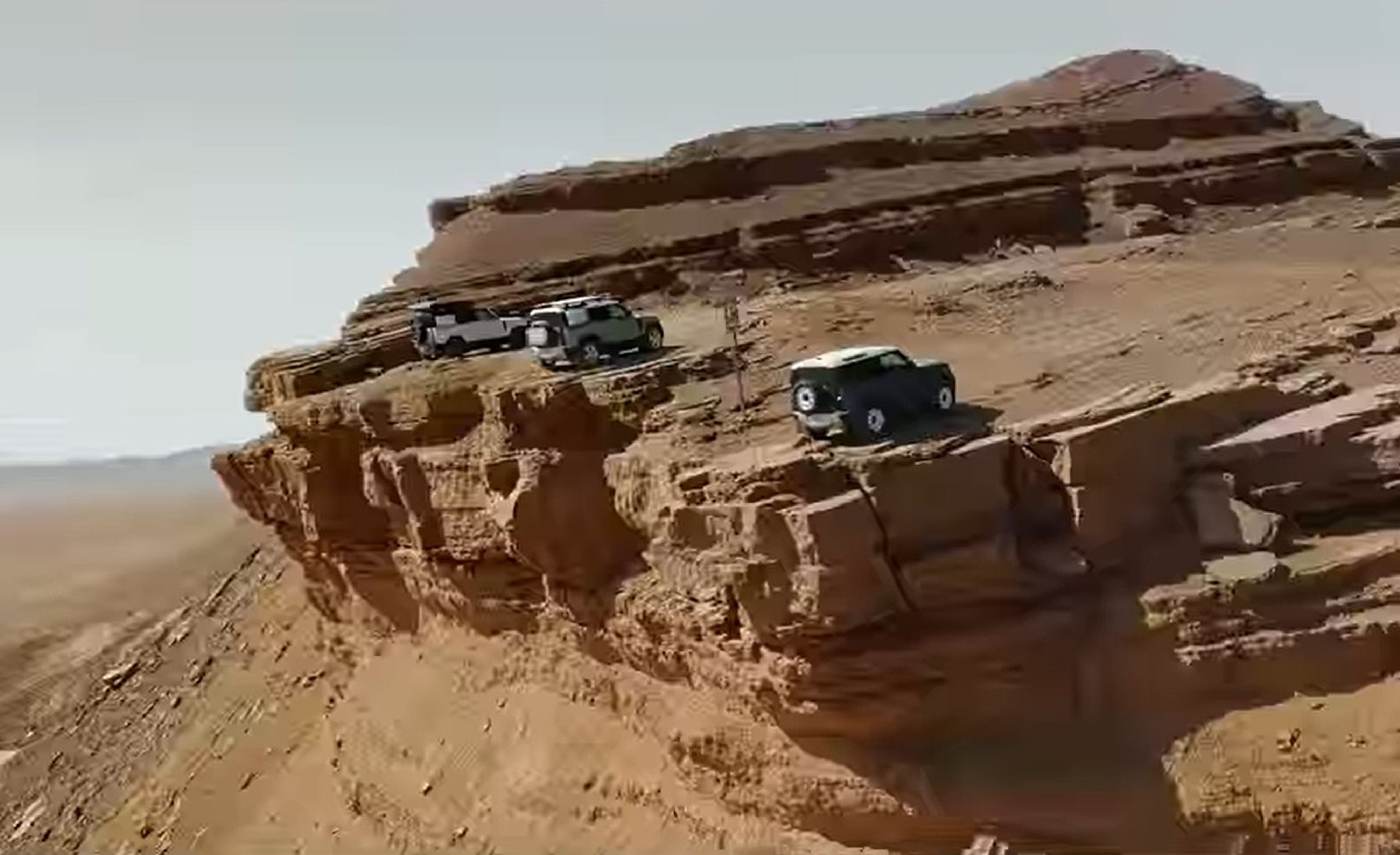Land Rover ads banned over cliff-edge parking sensor scene
Jaguar Land Rover agreed that parking sensors would not warn of empty space behind the vehicle.

Your support helps us to tell the story
From reproductive rights to climate change to Big Tech, The Independent is on the ground when the story is developing. Whether it's investigating the financials of Elon Musk's pro-Trump PAC or producing our latest documentary, 'The A Word', which shines a light on the American women fighting for reproductive rights, we know how important it is to parse out the facts from the messaging.
At such a critical moment in US history, we need reporters on the ground. Your donation allows us to keep sending journalists to speak to both sides of the story.
The Independent is trusted by Americans across the entire political spectrum. And unlike many other quality news outlets, we choose not to lock Americans out of our reporting and analysis with paywalls. We believe quality journalism should be available to everyone, paid for by those who can afford it.
Your support makes all the difference.Two ads for Land Rover Defenders have been banned for giving the misleading impression that the vehicle’s parking sensors could alert drivers to a cliff edge.
The TV ads, seen in February, showed several Land Rovers driving in difficult terrain on an island before reverse parking on the edge of a cliff, using the vehicles’ sensors to guide them.
Two viewers, who understood that parking sensors warned of objects behind the vehicle but not empty space, challenged whether the ads were misleading about the extent of the feature’s ability.
Because we understood the car’s parking sensors reacted to objects behind the vehicle, rather than to empty space such as a drop, we concluded that the ads misleadingly represented the parking sensor feature
Jaguar Land Rover agreed that parking sensors would not warn of empty space behind the vehicle.
They believed, however, that the side shots of the vehicle clearly showed that it was reversing towards a boulder, the size and height of which would have been picked up by the sensors.
The Advertising Standards Authority (ASA) said the ads focused on the Defender’s reversing feature and included a scene with an in-car camera view and the sensor beeping as the vehicle approached the edge of the cliff.
The watchdog said some small rocks were visible as the vehicle reversed but they appeared to be incidental to the scene, and it was not obvious that the parking sensor was reacting to the rocks rather than the edge of the cliff.
The ASA said: “We considered some viewers would therefore interpret that to mean that the car’s parking sensors could recognise when drivers might be reversing near a drop, which might include a smaller hill edge or a drop before water found in ‘on-road’ areas, both in urban and more rural settings.
“Because we understood the car’s parking sensors reacted to objects behind the vehicle, rather than to empty space such as a drop, and the rocks were not sufficiently prominent to counter that interpretation, we concluded that the ads misleadingly represented the parking sensor feature.”
The ASA ruled that the ads must not appear again, adding: “We told Jaguar Land Rover Ltd to ensure their ads did not mislead about the functionality of their parking sensor feature.”
Jaguar Land Rover said in a statement: “We are very disappointed with the ASA decision to uphold this complaint in the UK as the vehicle, technology and the scene represented is factual, but we will of course abide by their ruling which was based on only two complaints.”
Subscribe to Independent Premium to bookmark this article
Want to bookmark your favourite articles and stories to read or reference later? Start your Independent Premium subscription today.